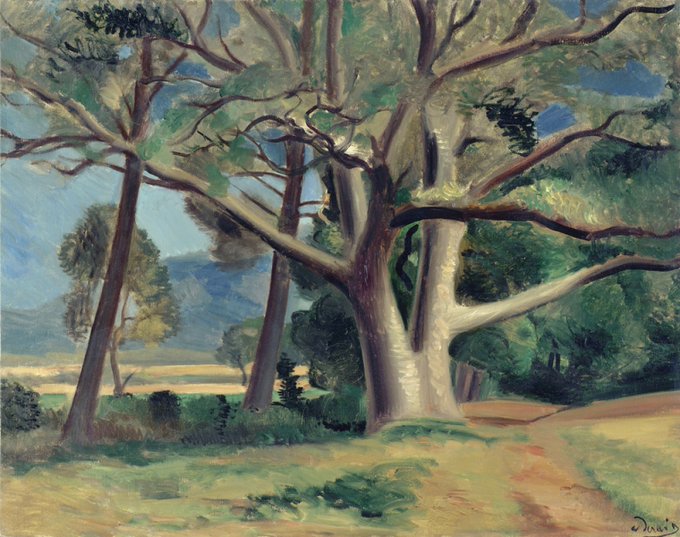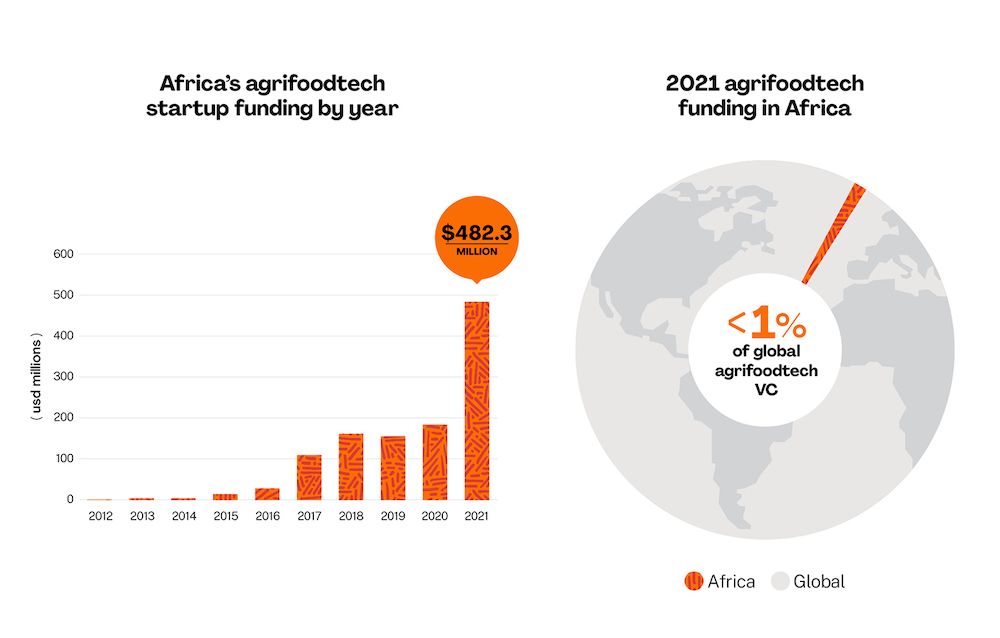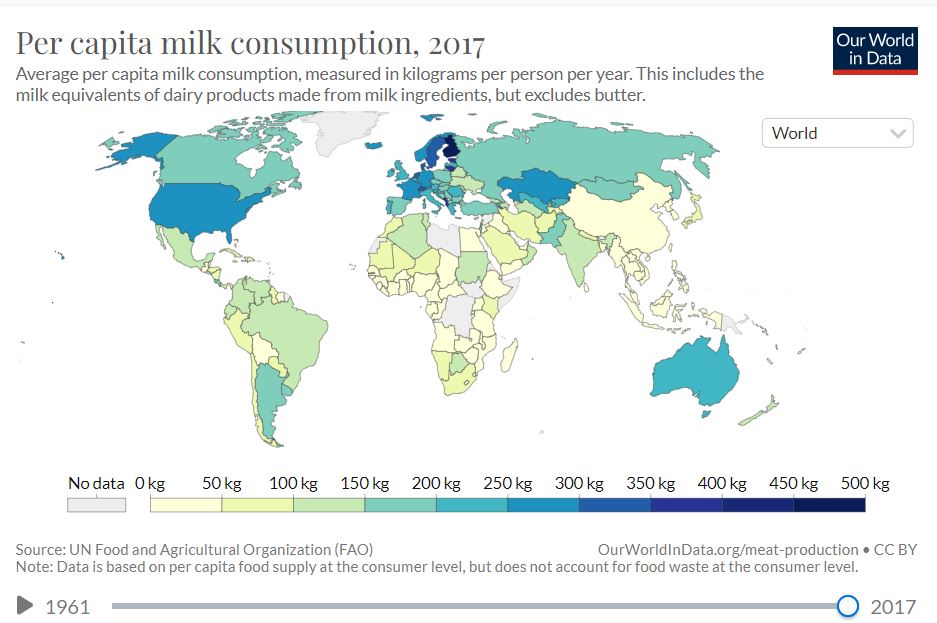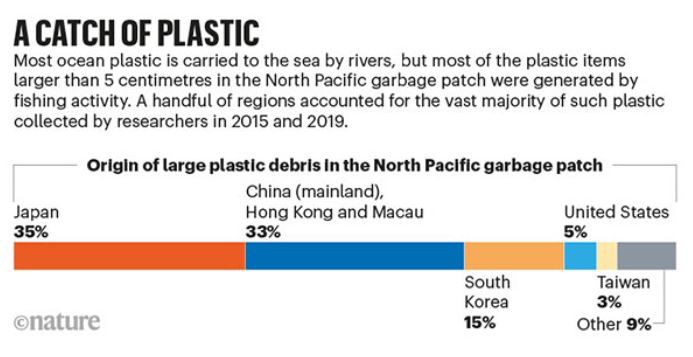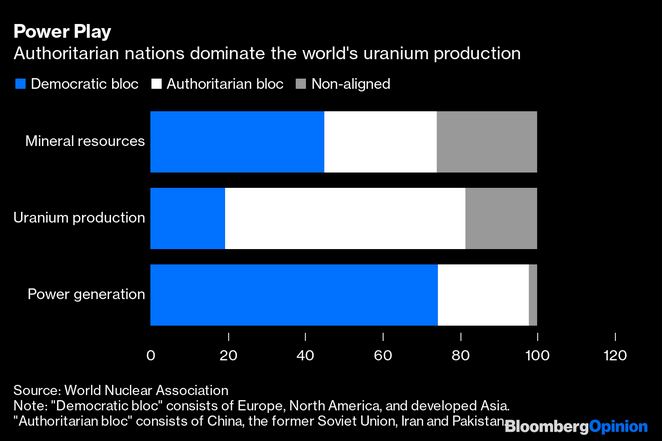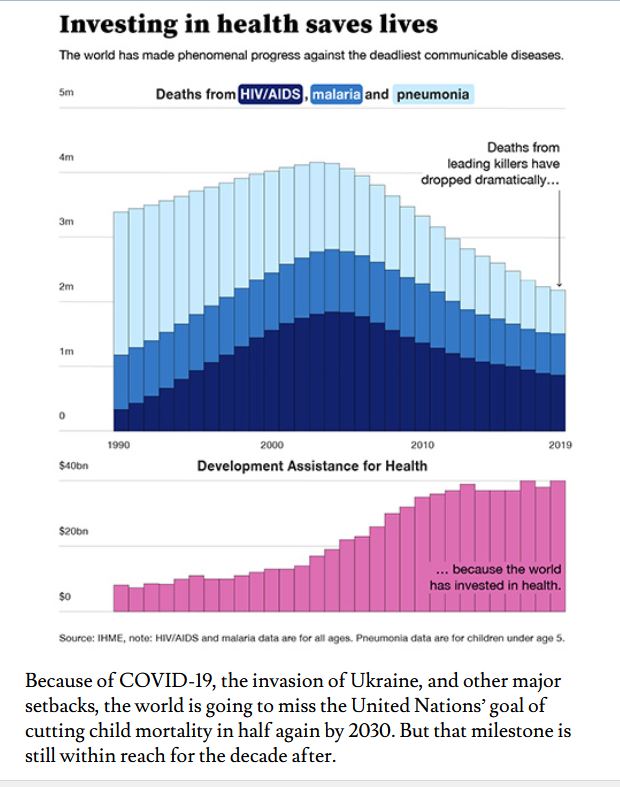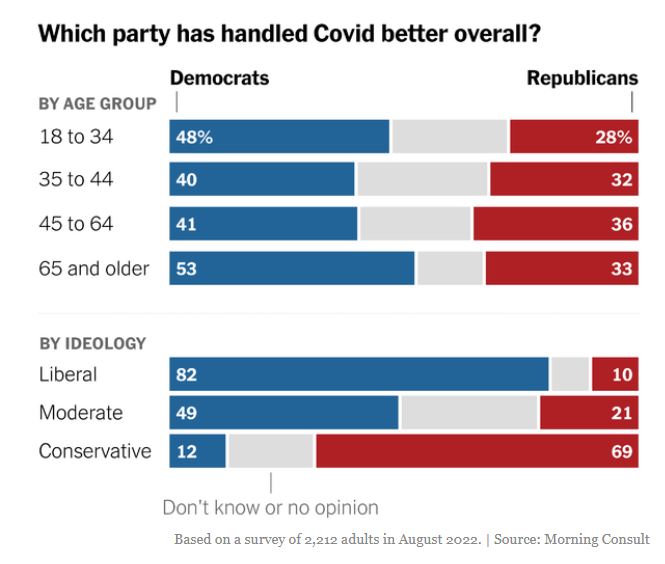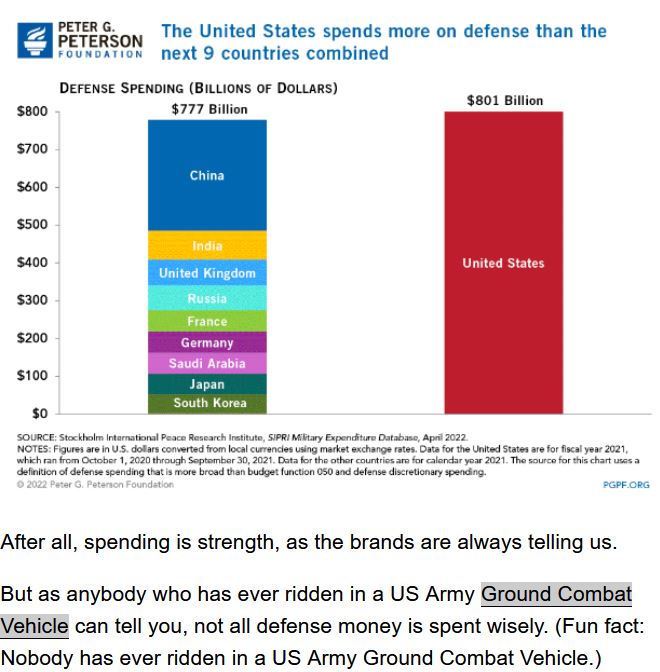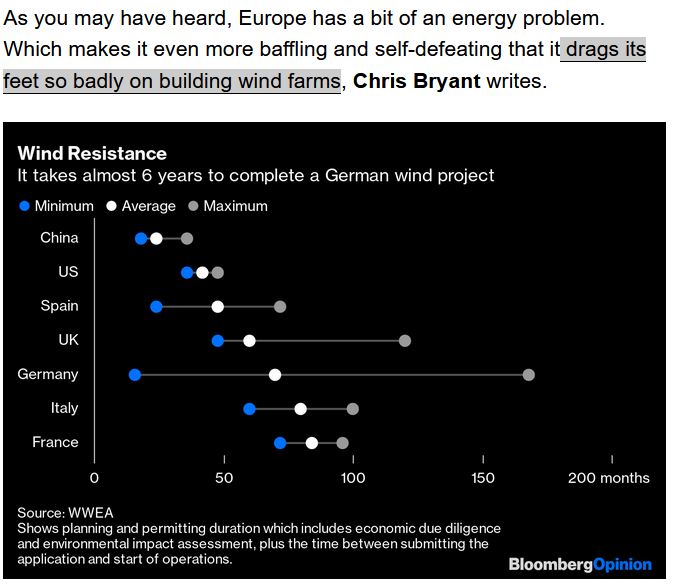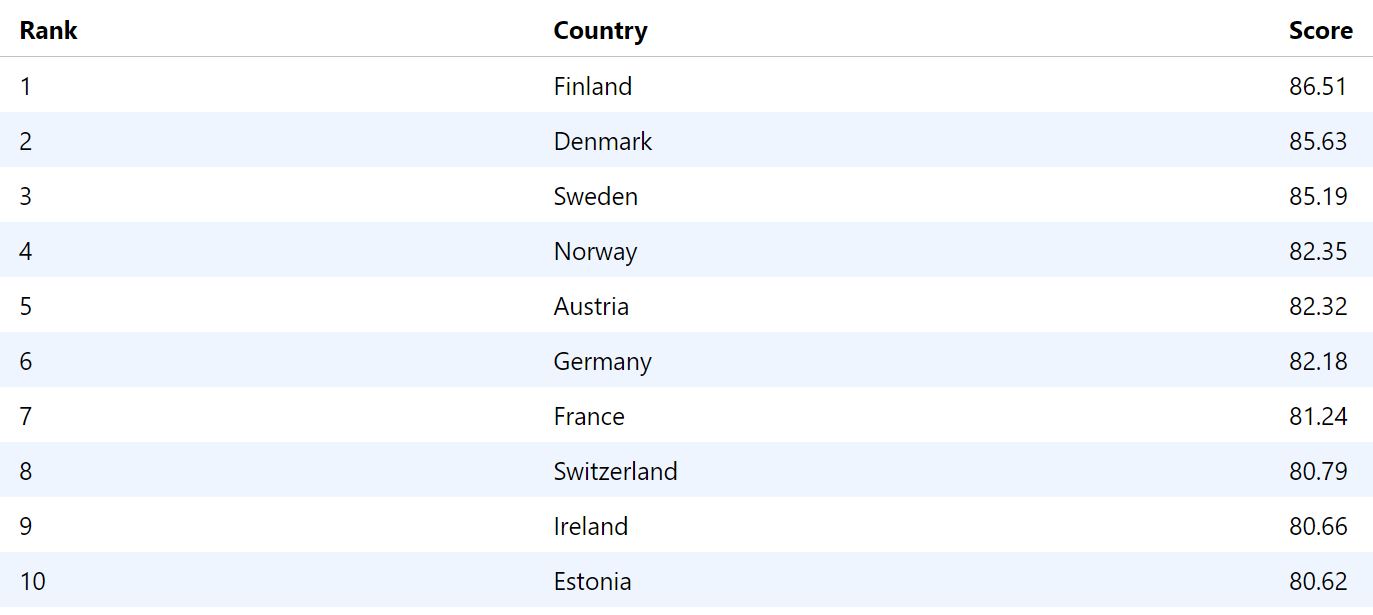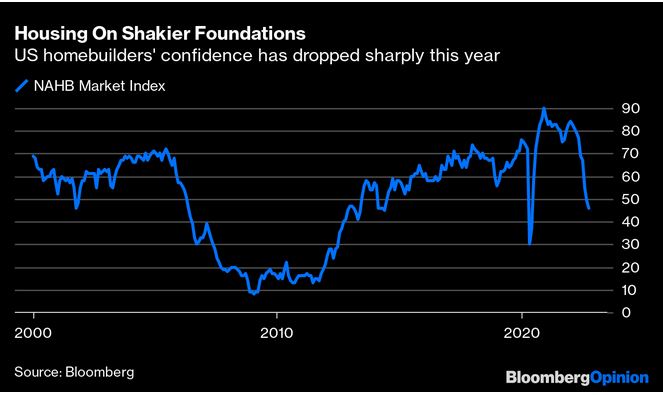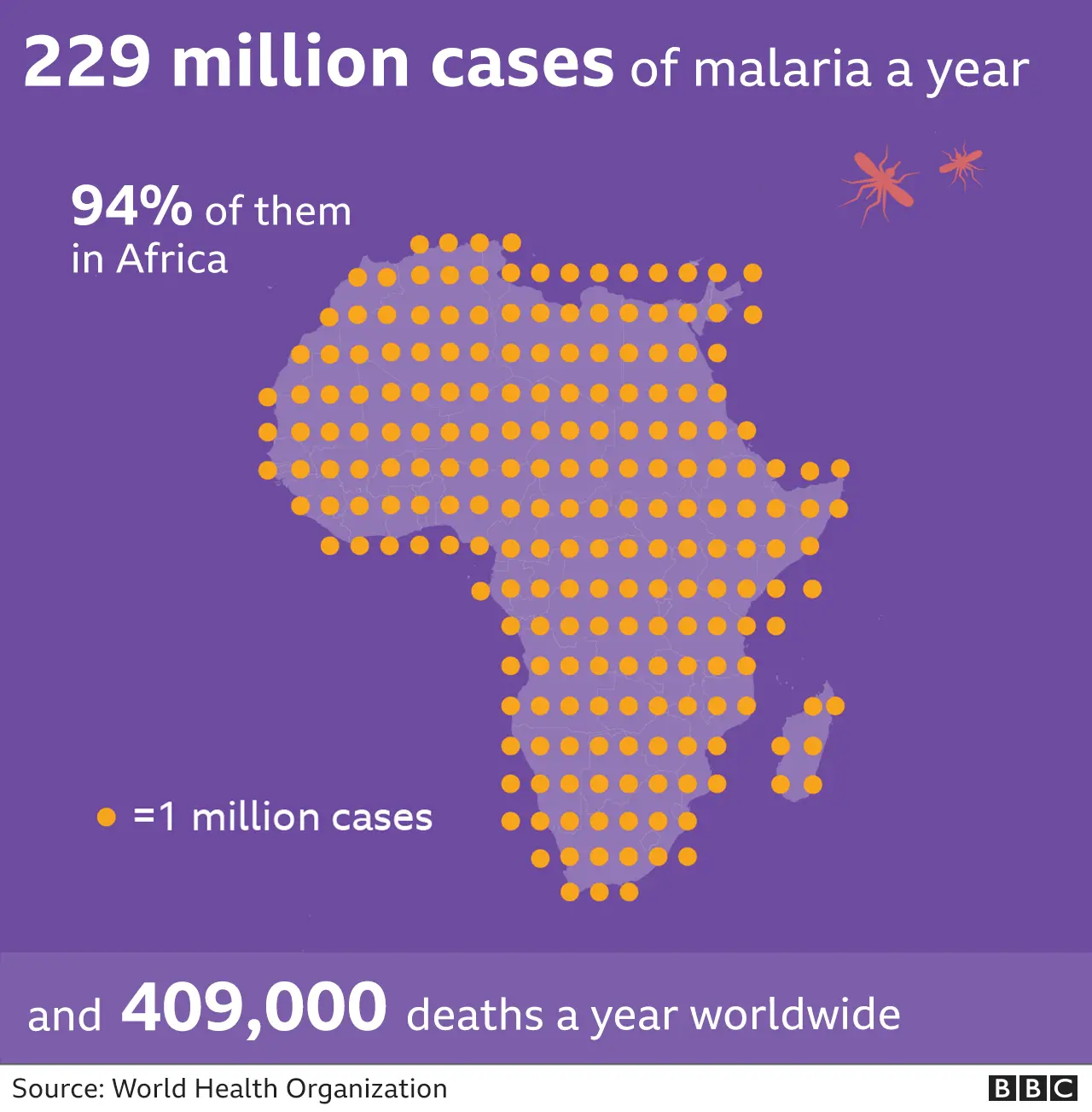|
You
can also view the message online
|
||||||||||||||||||||||||||||||||||||||||||||||||||||||||||||||||||||||||||||||||||||||||||||||
 Châtenay-Malabry (FR - 92290), September 26, 2022 EFITA newsletter / 1057 - European Federation for Information Technology in Agriculture, Food and the Environment The informatique-agricole.org site offers you the possibility of subscribing the RSS feeds of its two newsletters See RSS feeds to implement to ensure that you continue to receive this newsletter To unsubscribe this newsletter, please contact me directely: guy.waksman(a)laposte.net if this link Unsubscribe does not work. 
To correspond with me (GW), please use this address: guy.waksman(a)laposte.net To subscribe the efita newsletter (please ask your friends and colleagues to test this link) Efita Newsletters subscription Before computers Weekly newsletters about ICT in Agriculture in English and French Both newsletters have around 10000 subscribers. >>> Last weekly EFITA Newsletters in English (created in 1999) Efita Newsletters >>> Last weekly AFIA Newsletters in French (created more than 20 years ago in 1997) Afia Newsletters >>> Statistics for the last efita newsletter >>> Last issue of the afia newsletter >>> Last available satistics for the afia newsletter Le chemin des forêts, de André Derain (1880-1954),
Proceedings of the First International Conference on Farmer-centric On-Farm Experimentation - Digital tools for a Scalable Transformative Pathway This conference was organised by INRAE - #DigitAg and the ISPA OFE-C (International Society of Precision Agriculture, On-Farm Experimentation Community), from October 13th to 15th in Montpellier, France. #OFE2021 was conducted in a hybrid format (including one day dedicated to a workshop to develop policy propositions) and was preceded by a round of four webinars in May 2021 on four major themes for OFE: - People and processes - Value creation - Data and analytics - Policy linkages Most of the 170 participants (40 people in Montpellier and 140 on-line) were researchers but also representatives from farmers’ associations, start-ups, NGOs, and policy makers. The conference achieved widespread geographical representation with 36 countries (54% from Europe, 16% from North America, 8% from South America, 8% from Asia, 8% from Africa and 6% from Oceania). The conference was structured around invited speakers addressing the four above-mentioned themes as well as 4-minutes videos/presentations, made available online (as an alternative to traditional posters), with a selection also presented during plenaries. A total of 80 submissions were selected (30 papers and 50 short presentations) that showcased OFE activities and projects worldwide). This material, additional to that of invited speakers, demonstrated the existence of a very rich and diversified scientific production. The three best conference papers were awarded by the Scientific Committee. The present Proceedings were built in an original multimedia format, which gathers all the contributions that have been produced for the conference: pre-conference webinars, contributions of the invited speakers and of researchers who answered the call for papers and videos. These #OFE2021 Proceedings gather 190 items: 64 papers, 63 video presentations and 63 short video presentations (15 and 4 minutes, respectively, all available on a dedicated YouTube channel). Specific outcomes also include a manifesto for OFE, guidelines for data analytics and policy recommendations to support OFE. A virtual special issue of the Agronomy for Sustainable Development journal is also being produced as a spin-off. Last, but not least, the organization warmly thanks the Co-operative Research Programme (CRP): Sustainable Agricultural and Food Systems of the Organisation for Economic Co-operation and Development (OECD), Agropolis Foundation, #DigitAg, the Occitanie Region, Montpellier University of Excellence (MAK’IT), Occitanum, Agreenium, RMT Modelia and RMT NAEXUS, INRAE (MathNum & AgroEcosystem Departments) for their financial support to the conference. The proceedings are still under an embargo until February 2023, but general public can have access to some of the material: > Editorial and introductory talks > Policy recommendations > Pre-conference Webinars Chemin en forêt de Fontainebleau, de André Derain (1880-1954)
How did we see the future yesterday?? See the incredible collection developed by Alain Fraval Mainstream Misinformation: The Lancet's Long History Of Anti-Science Advocacy Social media platforms, fringe websites and activist groups are well-known sources of unscientific nonsense. Less discussed is the fact that ideological activism masquerading as research often finds a home in prestigious academic journals. One journal in particular has a long history of publishing such dubious content—The Lancet. See acsh.org Coming soon: uEye XC autofocus camera Automatically perfect images even with changing object distances and lighting conditions? No problemfor the new 13 MP uEye+ XC autofocus camera from IDS. It closes the market gap between industrialcamera and webcam. The integrated autofocus ensures perfectly sharp images and videos. See en.ids-imaging.com Forêt de Saint-Germain-en-Laye , 1936 - 1938, de André Derain (1880-1954)
The world has recently become less democratic Many more people have democratic rights than in the past. But there is growing concern that this progress is being partially undone. Is this true? Has the world become less democratic recently? In this article we show that the leading approaches to measuring democracy all indicate that this is true: the world has become less democratic in recent years. The decline is substantial, but its extent depends on the measure we use. And overall, the world remains much more democratic than it was even half a century ago. This has also happened before: the world underwent phases of reduced democracy in the 1930s, and again in the 1960s and ‘70s. Back then, people fought to turn the tide, and pushed democratic rights to unprecedented heights. We can do the same again. .../...
FutureFarming.com > Is no-till the best way to capture and keep carbon in the soil? Should no-till farming continue or is plowing better, from a soil carbon capture and storage perspective? It’s generally accepted that tilling is not the choice we should make, but new research urges us to take a second look at no-till so that we view it more honestly. > On-farm grain analysis technology available for harvest 2022 Australian start-up Hone aims to have its first devices for on-farm grain analysis ready for sale by start of the grain harvest this year. > Market trends: Yield monitoring technology to dominate precision ag market Yield monitoring technology held the largest precision farming market share in 2021. According to MarketsandMarkets, yield monitoring technology will continue to be the biggest contributor to the growth of the precision ag market. > Harvesting robots: Radish harvesting robot saves growers up to 50% in costs Dutch company Koppert Machines has developed a new fully automatic radish harvesting robot. The harvesting and radish bunching machine is for outdoor use in the field. The first machines have already been delivered to customers in Denmark, Germany and the United States. > Field robots: A call to those who want to sell field robots in 2023 Future Farming is on a quest to update and complete its buyers guides of field robots 2023. Do you manufacture or know any of these robots? Then let us know! > Field Trials Podcast – Getting into the carbon market Changing growing practices to sequester more carbon might sound simple in theory. It’s often more complicated in practice, though, and potentially quite expensive. Robin Saluoks of eAgronom discusses challenges of participating in carbon markets, and where tech can make verification easier. > Electric weed control: Electric weeding with high frequency electricity gives better weed control with lower energy use Independent trials of RootWave’s tractor-mounted Volta machine in maize and sugar beet crops have shown that the electric weeding system provides full control of weeds. > Soil scanning: AgroCares and trinamiX jointly offer soil nutrient scanning solution Relying on trinamiX’ near-infrared (NIR) technology and a connection to AgroCares’ global databases, the soil nutrient scanning solution enables customers to determine the chemical composition of soils, feed and leaf. > Investments Taranis raises $40 million to develop technology to verify and validate carbon markets The new funding is to further fuel Taranis' growth, global expansion, and investment in technologies to make carbon markets a reality for growers. > Digitisation: Cropin launches world’s first industry cloud for smart agriculture Cropin Cloud is an intelligent cloud platform enabling agri-businesses accelerate the digital transformation. It comprises of several abilities and platform layers, including Cropin Apps, Cropin Data Hub, and Cropin Intelligence. > A call to those who want to sell field robots in 2023 Future Farming is on a quest to update and complete its buyers guides of field robots 2023. Do you manufacture or know any of these robots? Then let us know! > Grain quality measurement on the fly Grain quality measurement is not something the average person thinks about daily, but it’s an integral part of our lives – and now new technology using artificial intelligence and machine learning is about to be commercialized that will make it faster and much more efficient. > Tools & data: How is NASA trying to help farmers? NASA hopes it’s suite of free-to-access tools will help farmers, researchers, agribusinesses and others support food security in a changing global environment. > Harvesting robots: Ortolanda: ‘Without our radish harvesting and bunching robots, we would need 25 people’ Dutch radish growing company Ortolanda has been using fully automatic radish harvest and bunching machines from Koppert Machines for years. > Field robots: video | Autonomous tillage with e-Robotiller After the e-Robotiller from arable innovation group HWodKa and manufacturer Reedyk made a short-lived debut on May 19, the autonomous tillage vehicle was seen in public action during the Dutch Future Farming & Food Experience. > Field robot catalogue: Final call to those who want to sell ag robots in 2023 Future Farming is on a quest to update and complete its buyers guides of ag robots 2023. Do you manufacture or know any of these robots? Then let us know. This is your last chance before registration closes! See futurefarming.com No comment With a comment
Arva Intelligence Joins USDA Partnerships for Climate-Smart Commodities Arva will be providing its cloud-based, machine learning-enabled software to collect data and validate on-farm regenerative practices. See globalagtechinitiative.com SVG Ventures | THRIVE Announces Global Impact Summit for Silicon Valley The global search for the most innovative startups will address the number one issue facing society today -- climate change. See globalagtechinitiative.com La fontaine d'Ollières, 1930, de André Derain (1880-1954)
Ohio State and Nationwide Form Research Collaboration with New AgTech Innovation Hub Nationwide to provide $2 million in funding to new collaboration designed to tackle climate change challenges. See globalagtechinitiative.com CEA Company AmplifiedAg Releases Sustainability Impact Update The release of the report coincides with AmplifiedAg's participation in the USDA Food Loss and Waste Innovation Fair. See globalagtechinitiative.com Three billion people cannot afford a healthy diet A healthy diet is about much more than calories. We need a wide range of nutrient-dense foods to get all of the vitamins and minerals that are essential for good health. But healthy diets are expensive — more than four times the cost of a basic, calorie-sufficient one. This is true in every country in the world. As a result, three billion people cannot afford a healthy diet, even if they spend most of their income on food. In this article from July 2021, we look at different types of diets and how affordable they are to people around the world.
FarmHQ Enables Remote Monitoring With a Smartphone for Any Irrigation Pump CODA Farm Technologies FarmHQ system allows farmers to control their pumps from anywhere on their smartphone. See globalagtechinitiative.com “Soaring” input costs are accelerating agtech adoption, McKinsey survey finds, AFN, by Jennifer Marston - Sky-high costs for fertilizer, crop protection products and labor are increasing the number of US farmers turning to agtech tools and products, according to a new survey from McKinsey & Company. - The research surveyed 1,300 US crop farmers, 80% of whom cite input cost as the biggest risk to profitability.- Some 50% of small farmers plan to use new yield-increase products; 30% of large farmers (those with more than 5,000 acres) plan to use “green” products such as biofertilizers, citing lower costs per acre. See agfundernews.com Le gros arbre à Saint Maximin, de André Derain (1880-1954)
90% of African agrifoodtech investment went to Nigeria, Egypt and Kenya, AFN, by Lucy Ngige The 2022 Africa AgriFoodTech Investment Report by AgFunder in collaboration with the Dutch Entrepreneurial Development Bank, FMO and British International Investment was just released yesterday. The year 2021 was huge for African agrifoodtech startups as they secured $482.3 million in investment, a 250% jump from $185 million they raised in 2020. But where did most of the money go? While various technologies dictated the flow of financing, the vast majority of venture capital went to the three main startup hubs on the continent: Nigeria, Egypt, and Kenya. Collectively, startups from the three countries secured 87.6% of total African agrifoodtech investment in 2021. Overall, there were 150 investment deals, which were snagged by Nigeria, Egypt and Kenya-based startups across 38, 36, and 32 deals respectively. .../...
Per capita milk consumption
Pollution by fishing activiy
Sentera launches new crop health analytics for FieldInsights solution, CropLife, feat. Sentera Sentera, an industry leading ag analytics platform powered by machine learning, has launched seven new crop health and performance analytics as part of its FieldInsights product, which helps agronomic leaders make critical in-season and post-harvest decisions with accurate and reliable data sets. For research and seed production leaders in agriscience, the labor shortage has expounded the challenge of capturing accurate and precise measurements that can be trusted and delivered in a timely fashion. Recent data shows that there’s been a significant decrease in the number of hired farmworkers in recent years – and for agriscience, this poses challenges and risks for bringing new products to market. “Our technology gives research and product development leaders the measurements they need to evaluate crop health and performance from first sign of emergence through harvest,” said Andrew Muehlfeld, director of solutions engineering, Sentera. “We know that timeliness matters just as much as accuracy, and given the technology that powers FieldInsights, we can deliver our analytics when our customers need them most.” FieldInsights is Sentera’s data and analytics solution. After capturing high-resolution aerial imagery with a compatible ag drone system, Sentera’s machine learning platform translates the imagery into detailed data sets and measurements. Users can then analyze the data by using Sentera’s software platform, FieldAgent, or choose to consume the data via an integration or data export. In addition to Stand Count (including Male/Female Stand Count), Crop Health, and Tassel Count (including Male/Female Tassel Count) analytics available today, new FieldInsights analytics include: - Canopy Cover: identifying green vegetation to characterize growth stage and development. - Crop Area: digitally tracking field borders for seed production to minimize the risk of genetic drift - Elevation & Hydrology: modeling how water will flow within the field to inform water management strategies. - Flowering: measuring timing of plant flowering and development to characterize phenotype and track pollination. - Height and Lodging: detecting areas of damaged crop canopy to help track plant growth stage. - Residue Cover: quantifying the amount of residue cover to help improve soil management efforts. - Weed Detection: identifying the location, extent, and type of weed pressure. See croplife.com Authoritarian nations dominate the world's uranium production
Investing in health saves life
GDP is not the only way to measure human progresses and wellbeing!
Wild Pigs Release as Much Carbon Emissions as 1 Million Cars, Scientific American The invasive animals uproot soil, exposing it to microbes that release greenhouse gases. Whether you call them feral pigs, boar, swine, hogs, or even razorbacks, wild pigs are one of the most damaging invasive species on Earth, and they’re notorious for damaging agriculture and native wildlife. A big reason they’re so harmful is because they uproot soil at vast scales, like tractors ploughing a field. Our new research, published today, is the first to calculate the global extent of this and its implications for carbon emissions. Our findings were staggering. We discovered the cumulative area of soil uprooted by wild pigs is likely the same area as Taiwan. This releases 4.9 million tonnes of carbon dioxide each year — the same as one million cars. The majority of these emissions occur in Oceania. A huge portion of Earth’s carbon is stored in soil, so releasing even a small fraction of this into the atmosphere can have a huge impact on climate change. …/… See scientificamerican.com Les Salins de Martigues, 1913, de André Derain
Regenerative agriculture doesn't have to be contentious, Upstream Ag Insights, by Shane Thomas, Sep 10, 2022 Through writing Upstream Ag Insights I get a lot of in-bound questions and comments. Primarily from individuals within the industry, but also more regularly from individuals and groups on the edges and outside of '“upstream” agriculture. One common question I get from this group is “What do you think of regenerative ag?” Regenerative agriculture has been increasingly talked about, albeit this isn’t the first time it has been trending. .../... So what exactly is “regenerative ag”? It is defined as the below according to the Rodale Institute.: a system of farming principles and practices that seeks to rehabilitate and enhance the entire ecosystem of the farm by placing a heavy premium on soil health with attention also paid to water management, fertilizer use, and more. It is a method of farming that “improves the resources it uses, rather than destroying or depleting them Essentially, it’s a bundle of practices, many of which are commonly practiced by “conventional” farmers already. I’ll dive into them, but then the question arises: When does someone get to be considered “regenerative”? Is it doing 2 of the practices? 3? 4? How well do you have to do them? Does it matter? .../... See upstreamaginsights.substack.com Incredible politisation of debates about Covid-19
US huge defence budget
A first thought for today If more politicians in this country were thinking about the next generation instead of the next election, it might be better for the United States and the world. Claude PEPPER, senator and representative (1900-1989) A second thought for today I am patient with stupidity but not with those who are proud of it. Edith SITWELL, poet (1887-1964) A third thought for today We all have our time machines. Some take us back, they're called memories. Some take us forward, they're called dreams. Jeremy IRONS, actor (1948 - ) Welcomed movements against wind turbine
Deep learning-based approach for identification of diseases of maize crop In recent years, deep learning techniques have shown impressive performance in the field of identification of diseases of crops using digital images. In this work, a deep learning approach for identification of in-field diseased images of maize crop has been proposed. The images were captured from experimental fields of ICAR-IIMR, Ludhiana, India, targeted to three important diseases viz. Maydis Leaf Blight, Turcicum Leaf Blight and Banded Leaf and Sheath Blight in a non-destructive manner with varied backgrounds using digital cameras and smartphones. In order to solve the problem of class imbalance, artificial images were generated by rotation enhancement and brightness enhancement methods. In this study, three different architectures based on the framework of ‘Inception-v3’ network were trained with the collected diseased images of maize using baseline training approach. The best-performed model achieved an overall classification accuracy of 95.99% with average recall of 95.96% on the separate test dataset. Furthermore, we compared the performance of the best-performing model with some pre-trained state-of-the-art models and presented the comparative results in this manuscript. The results reported that best-performing model performed quite better than the pre-trained models. This demonstrates the applicability of baseline training approach of the proposed model for better feature extraction and learning. Overall performance analysis suggested that the best-performed model is efficient in recognizing diseases of maize from in-field images even with varied backgrounds. See nature.com France and Germany, “among the big countries“ the least bad ones when it comes to the Sustainable Development Goals
A review of the book “Superabundance” by Marian Tupy and Gale Pooley (review published in The Economist) Superabundance: The Story of Population Growth, Innovation and Human Flourishing on an Infinitely Bountiful Planet. By Marian Tupy and Gale Pooley. Cato Institute; 655 pages; $34.95 In 1980 Chinese officials met to discuss birth control. One of them, Song Jian, had just returned from Europe, where he had read two influential books: “The Limits to Growth” (published by the Club of Rome, a think-tank), and “A Blueprint for Survival” (based on an article in the Ecologist magazine). Both argued that a growing population would deplete Earth’s resources, with results including “the breakdown of society and the irreversible disruption of life-support systems on this planet”. Mr Song helped persuade China’s Communist Party to enforce a merciless one-child policy for 35 years. Couples with excess babies were hit with ruinous fines; the homes of some were bulldozed. Illegal children were denied public services or put up for adoption abroad. Women pregnant with a second child were tied down and subjected to late-term abortions. Some officials drowned illicit babies in buckets. China’s one-child policy is an extreme example of what Marian Tupy and Gale Pooley call “anti-humanism”: the belief that people are a burden on the planet, and so the fewer of them there are, the better. A few environmentalists espouse grotesque versions of this view. The authors quote Christopher Manes, who suggested that HIV/AIDS was “the necessary solution” to overpopulation. Others, such as Alexandria Ocasio-Cortez, a star of America’s Democratic Party, merely question whether it is ethical to have children. She is far from alone: according to an international poll, a hefty 39% of people hesitate to procreate for environmental reasons. Mr Tupy, who works for the Cato Institute, a libertarian think-tank, and Mr Pooley (of Brigham Young University), think people should be free to have the number of children they want. Because they have brains as well as mouths, they argue, more people mean more innovation—which in turn means many of the problems caused by a rising population can be solved by it. This is not a new idea. It was the inspiration behind a bet between the late Julian Simon, an economist, and Paul Ehrlich, a population alarmist, in 1980. Mr Ehrlich was sure that the world was running out of stuff, so a basket of commodities (chromium, copper, nickel, tin and tungsten) would get more expensive over the next decade. Simon reckoned human ingenuity would unlock new resources, so they would get cheaper. Simon won the bet. Mr Tupy and Mr Pooley have broadened the scope of Simon’s analysis. They look at a wider range of goods over a longer period of time (some of their data goes back to 1850). And they use a different measure of value. Instead of relying on prices in dollars and adjusting for inflation, which is hard to do accurately across borders and eras, they look at “time-prices”: how long it takes to earn enough to buy something. If someone earns $10 an hour and a banana costs $1, for example, the time-price of a banana is six minutes. As well as being robust, the method yields some cheering results. The average time-price of a basket of 50 commodities, from uranium and rubber to tea and shrimp, fell by 72% worldwide between 1980 and 2018. Resources are becoming more abundant (ie, available to more people) as new ways to find and exploit them are invented. The time-price of many manufactured goods fell even faster. In 1997 it took a typical blue-collar worker in America 828 hours to buy a flat-screen television; by 2019 that had fallen to 4.6 hours. Time-prices suggest the world is getting richer at a cracking pace (with the odd hiccup when there is a pandemic or war). They also offer a fresh perspective on global inequality. By the authors’ calculations, in 1960 a typical Indian had to toil for seven hours to put rice on the family table, while a typical American had to work for one hour to buy enough wheat. For their grandchildren in 2018 those figures had fallen to 58 minutes and 7.5 minutes respectively. Thus in 1960 the Indian worked 7 times longer to buy food; that ratio rose to 7.7 for his grandson, suggesting that inequality has increased. But another interpretation is that the Indian gained 362 minutes a day, while the American gained a seventh of that. “Time inequality between the two has declined dramatically,” the authors judge. “When basic things get more abundant, it’s the poor who benefit the most.” Past progress is widely underestimated, they argue, and the future is probably rosier than most people imagine. Plenty of things could go wrong, they concede. Restraints on free speech could stifle innovation; governments could muffle market forces, reducing the incentive to develop new ideas. They devote too little space to climate change, but their main suggestion—that more research will be required to make nuclear power cheaper and safer—is right as far as it goes. This book has other small flaws, among them the subtitle: no planet can be “infinitely bountiful”. But overall it is brain-stretching, optimistic and humane. See economist.com Chapelle St-Sixte à Eygalières. par André Derain
“Superabundance” Review by Jeremy Horpedahl, August 31, 2022 .../... The authors use the approach of “time prices” throughout the book. They are not the first to use this approach. Julian Simon (their inspiration for this project) used it in various places in his work. William Nordhaus famously used it is in paper on the history of the price of lighting. And Michael Cox and Richard Alm have used the time-price approach in many of their writings, from the 1997 Dallas Fed annual report, to a full-length book a few years later, as well as updates to the original 1997 report. And if you follow me on Twitter, I like to use this approach too. In short, “time prices” tell us how many hours of work it takes to purchase a given good or service at different points in time. How many hours would you have to work to buy a pound of ground beef? A square foot of housing? An hour of college tuition? It’s the superior method when you are looking at the price of a particular good or service over time, compared with a naïve inflation adjustment, which only tells you if the price of that good/service rose faster or slower than goods or services in general, not if it’s become more affordable. Inflation adjustments are really only useful when you are trying to compare income or wages to all prices, to see if and how much incomes have increased over time. Of course, which wage series you choose is important (and you need to have a consistent series over time, or at least the end points), but as the authors point out (which they learned from me!), if you looking at wages after 1973, the wage series you use doesn’t matter much. Median wages, average wages, wages of the “unskilled” — these all give you the same trend since 1973. We don’t have all of these back earlier (especially median wages), but there’s not much reason to believe they’ve diverged that much. And the authors also present their data using multiple wage series in many of the charts and tables. .../... See economistwritingeveryday.com Thought about the book “Superabondance”, by Tupy and Pooley “People don’t depend on stuff; they depend on ideas—formulas, algorithms, knowledge—which allow stuff, useless by itself, to satisfy our wants. In this lucid and illuminating book, Tupy and Pooley lucidly use this insight to explain a fact that, surprisingly, surprises people: over the centuries, our increasing knowledge has made more stuff available to us.” Steven PINKER, author of Enlightenment Now: The Case for Reason, Science, Humanism, and Progress After deliberating less than an hour, Missouri county jury concludes glyphosate weedkiller did not cause plaintiff's cancer, delivering Bayer/Monsanto 5th court victory in a row… .../... A St. Louis County jury has determined Bayer and the former Monsanto should not be held liable in a lawsuit over the weed killer product Roundup. Three plaintiffs in their 60s and 70s had claimed long-time exposure to Roundup—specifically the chemical glyphosate—gave them lymphoma and that Monsanto neglected to warn the public of its dangers. Monsanto said Roundup does not cause cancer. .../... See geneticliteracyproject.org Yuan Longping, the Chinese agronomist who created the world's first high-yield hybrid rice In the early 1970s, Yuan developed the first variant of high-yield hybrid rice. Yuan’s discoveries, coupled with breakthroughs in wheat hybridization in the 1950s and 1960s by Norman Borlaug, helped usher in the Green Revolution, which reduced the likelihood of famine in most of the world. As rice is the staple food for approximately half the world’s population, by increasing the plant’s yield, Yuan’s work helped save millions of lives. By the late 1990s, the excess yield brought about by Yuan’s hybrid rice fed an additional 100 million Chinese people each year. Today, varieties of Yuan’s rice are grown in more than 60 countries worldwide. See humanprogress.org US Housing crisis (1)
US Housing crisis (1)
Forêt en Île-de-France (Sous-bois), vers 1946-1948, de André Derain
Musical Abundance, by Gale Pooley In 1955, an unskilled worker in the U.S. had to work for 40 minutes to afford a song. By 2003, that dropped to 6.42 minutes. Today, the time price of a song is around one-eighth of a second. For the time it took our grandparents to earn the money to buy one song in 1955, we get 19,750 songs today. See humanprogress.org San Francisco, center of progress during the digital revolution In a modern gold rush, the opportunities offered by digital technology drew scores of entrepreneurs to the San Francisco Bay. The result was a flurry of innovation that transformed how we work, communicate, learn, seek entertainment, and more. See humanprogress.org Forêt aux Lecques, Provence, de André Derain
New malaria vaccine is world-changing, say scientists, by James Gallagher, BBC Health and science correspondent A malaria vaccine with "world-changing" potential has been developed by scientists at the University of Oxford. The team expect it to be rolled out next year after trials showed up to 80% protection against the deadly disease. Crucially, say the scientists, their vaccine is cheap, and they already have a deal to manufacture more than 100 million doses a year. The charity Malaria No More said recent progress meant children dying from malaria could end "in our lifetimes". It has taken more than a century to develop effective vaccines as the malaria parasite, which is spread by mosquitoes, is spectacularly complex and elusive. It is a constantly moving target, shifting forms inside the body, which make it hard to immunise against. Last year, the World Health Organization gave the historic go-ahead for the first vaccine - developed by pharmaceutical giant GSK - to be used in Africa. However, the Oxford team claim their approach is more effective and can be manufactured on a far greater scale. Trial results from 409 children in Nanoro, Burkina Faso, have been published in the Lancet Infectious Diseases. It shows three initial doses followed by a booster a year later gives up to 80% protection. .../...
Paysage aux rochers, c. 1928, de André Derain
Korean nuclear fusion reactor achieves 100 million°C for 30 seconds, by Matthew Sparkes, 7 September 2022 A sustained, stable experiment is the latest demonstration that nuclear fusion is moving from being a physics problem to an engineering one A nuclear fusion reaction has lasted for 30 seconds at temperatures in excess of 100 million°C. While the duration and temperature alone aren’t records, the simultaneous achievement of heat and stability brings us a step closer to a viable fusion reactor – as long as the technique used can be scaled up. Most scientists agree that viable fusion power is still decades away, but the incremental advances in understanding and results keep coming. An experiment conducted in 2021 created a reaction energetic enough to be self-sustaining, conceptual designs for a commercial reactor are being drawn up, while work continues on the large ITER experimental fusion reactor in France. Now Yong-Su Na at Seoul National University in South Korea and his colleagues have succeeded in running a reaction at the extremely high temperatures that will be required for a viable reactor, and keeping the hot, ionised state of matter that is created within the device stable for 30 seconds. .../... See newscientist.com Trois Arbres, l'Estaque, 1906, de André Derain
Chuck Norris stories 41. Chuck Norris is the only man that knows Victoria’s Secret. 42. Chuck Norris once visited the Virgin Islands. They are now just the islands. 43. Chuck Norris once strangled someone… with a cordless phone. 44. It’s impossible for Chuck Norris to have a heart attack. Nothing attacks Chuck. 45. Chuck Norris was wrong once. He thought he made a mistake. 46. Chuck Norris once won an arm wrestling competition… with his hands tied behind his back. 47. Chuck Norris once stared into the abyss. It’s never been seen since. 48. Chuck Norris once punched a cyclops… between the eyes. 49. Chuck Norris destroyed the periodic table, he only recognises the element of surprise. 50. Outer space exists for one reason and one reason only. It’s afraid to be on the same planet as Chuck Norris. See medium.com
The distribution of this efita newsletter is sponsored by vitisphere.com Please, contribute to the content of your efita newsletter, and advertise your events, new publications, new products and new project in this newsletter. Without your support, it will not survive! Contact: Guy WAKSMAN E-mail: guy.waksman(a)laposte.net To read this newsletter on our web site See Efita The archives of this newsletter See Efita Do not miss the Virus Jokes in English and French About the EFITA mailing list You can use the efita moderated list (> 15000 subscribers) to announce any event / product / web site / joke (!) related to IT in agriculture, environment, food industry and rural areas. If you want to subscribe a friend, please fill in his form. If you do not wish to receive our messages, please fill in the following form... |









